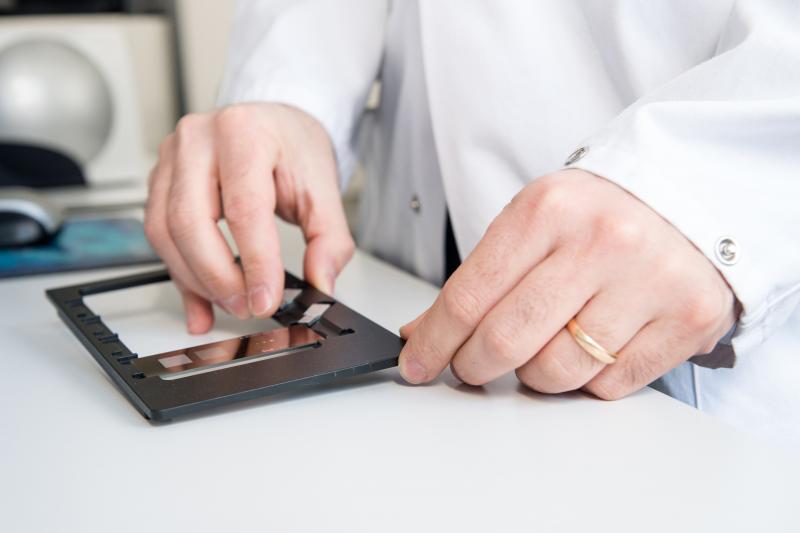Raman microscopy
Visualization and identification of (sub)visible particles dispersed in a liquid formulation

Raman microscopy is a powerful technique that delivers bright field images of particles as low as a few micrometers and allows for the identification of individual particles through Raman spectroscopy. The technique can be applied to samples in suspension or after isolation on a filter.
For the analysis of particles in liquid formulations, a reservoir is filled with the sample and microscopic images of the suspended particles are taken, enabling a morphological analysis. Particles of interest are subsequently illuminated with a laser beam and the electromagnetic radiation from the illuminated particle is collected by lens. The wavelength corresponding to that of the laser light (Rayleigh scattering) is filtered out, while the rest of the collected light is dispersed onto a detector. The recorded Raman scattering information serves as a chemical fingerprint, which is compared to a library or a reference compound for determination of the chemical identity or origin of the particle.
Benefits and limitations of Raman microscopy
Raman microscopy has a high spatial resolution and can be applied to particles as small as ca. 5 µm. Depending on the particle properties, long acquisition times might be required, typically allowing for only a few particles per sample to be analyzed. Data from Raman microscopy can be combined with results obtained by flow imaging microscopy (FIM). Hereby, the particle morphology information from both instruments is used to link particle identity to quantitative information.
The analysis of particles suspended in liquid comes with some challenges, especially when formulation components interfere with the scattering signal. In this case, particles inside the sample may be isolated on a filter, preferably a metal-coated membrane or a gold filter. This reduces the influence of water and formulation components on the analysis.
Applications for Raman microscopy
Raman microscopy is typically used during troubleshooting and root-cause analysis. Coriolis offers Raman microscopy as a stand-alone service or as part of a particle identification study or formulation development program.
Quality & biosafety level of this method
We provide all our analytical services with the highest quality standards. Each project is carried out by experienced scientists and every report or data presentation is comprehensively checked by a scientific reviewer. We offer this technology with the following quality and biosafety level:
Standardized methods or dedicated method development
For common sample types, we can often apply standardized methods with little setup effort. On top of this, our experienced analytical scientists perform in-depth method development or method optimization tailored to your drug substance, product type and development phase.
Method development
During method development, we tailor sample preparation, method settings, and data analysis to the needs of your project and sample.
For this purpose, we include a representative sample and, where available, suitable reference standards and stressed/degraded materials. This way, our analytical scientists can design a method that is highly suitable for your needs, stability indicating, as well as robust and repeatable. Upon request, we compile a detailed method description for your records.
This can be applied under R&D. Read more
Method qualification
A method qualification is the initial assessment of the performance of an analytical procedure to show that it is suitable for the intended purpose.
During method qualification, our analytical scientists perform a documented testing that demonstrates that the analytical procedure meets certain acceptance criteria in several categories. These may include repeatability, linearity, intermediate precision, robustness and more. We compile a qualification plan and a qualification report including all relevant data.
This can be applied under R&D. Read more
Contact us
Contact us
Do you have any questions? Want to analyze your samples?


